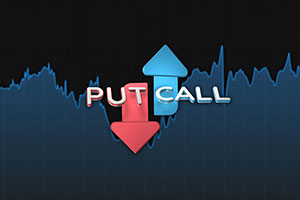Covered Call Funds

A “call” is an option contract giving an investor the right (but not the obligation), to buy a specified amount of a certain investment at a specified “strike price” within a specified time. When the strike price on the call is less than the market price on the exercise date, the owner can use their call option to buy the instrument at the lower strike price (if market value is $100/share but your strike price is $90/share, then you can purchase the investment for $90/share). A call option can also be sold before the maturity date if it is “in the money” based on the market's movements. If the market price is less than the strike price (market value is $85/share and your strike price is $90), the call expires unused and worthless.
An investor pays a premium to buy a call option, which means on the other side of the transaction is a seller. Sellers of call options collect the premium and then have the obligation of delivering the investment at the strike price if necessary. If the seller collected a premium of $5/share on the option contract, this is how the 2 examples above would’ve played out:
- $5 (premium) - $10 (difference between strike price and market values) = $5 loss per share.
- $5 (premium) - $0 (since option expires worthless) = $5 profit per share.
If a seller of a call option does not own the underlying investment, it is considered a “naked call”. If a seller does own the underlying investment, it is considered a “covered call”. So, a covered call fund is a fund that sells call options on investments they already own. They collect premiums on the call options while also participating in the price movement of the underlying investments. The upside of the price movement is capped at a certain level since if the market price exceeds the strike price, the option will be exercised.
If you own ABC stock with a market value of $100 and then you sell a call option with a strike price of $105 for a premium of $3, here are three possible outcomes:
- ABC soars to $115 by expiration. The seller makes a profit of $8 ($3 premium + $5 appreciation since the strike price of $105 limits the upside), but left some money on the table.
- ABC trades flat and expires at $101. The seller makes a profit of $4 ($3 premium + $1 appreciation)
- ABC tanks to $85 by expiration. The seller loses $12 ($15 loss of value offset by a $3 premium)
Covered call funds can be used in US Large Growth, US Large Blend, US Large Value, and International Large Blend. We prefer covered call funds that sell options on an index (S&P 500, NASDAQ, etc.) vs. individual stocks for diversification purposes. Most funds have an expense ratio around 1% so they are not cheap. Covered call funds are not used too often, but when they are, it is because an investor prefers a combination of a blended defensive and income enhancing investment.
Implementation: In our Core 60 portfolio, we might use 25% - 75% of a covered call fund as part of one of the allocations listed above.

